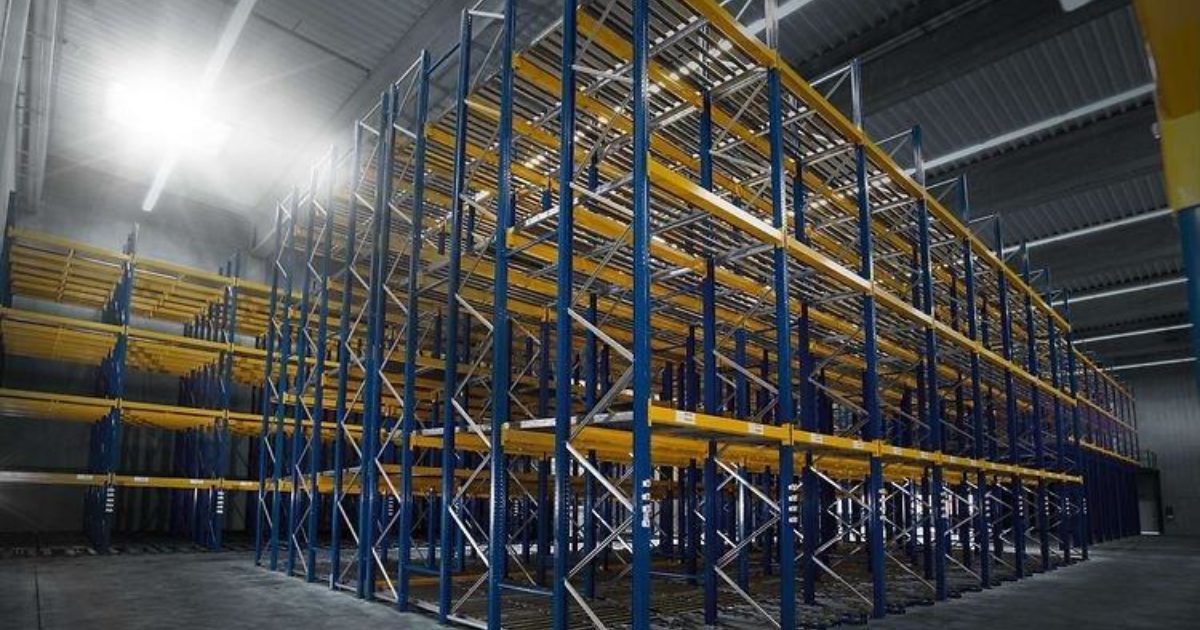When to Use High-Density Warehouse Racking Systems

In a world in which warehouses handle increasing amounts of
inventory while facing increasing costs, making the most of existing space is a
priority. Elements of the warehouse previously considered essential, like traditional
selective racking, are falling by the wayside in favor of using that space to
store inventory.
Successfully reducing or eliminating aisles and increasing
storage capacity requires creativity, efficiency, and high-density warehouse
racking systems. At the same time, these systems are not for everyone. As with
any storage solution, they work best in specific situations. Here is a look at
some situations that may require their usage, and some that do not.
Limited Storage Space
The most obvious reason to use high density storage is when dealing
with limited storage space. Selective pallet racking systems may allow for more
pick faces and SKUs, but they require quite a lot of real estate space or
square footage.
Instead, high density warehouse racking systems store pallets
in a cube configuration. This configuration allows more products to be stored
in the same amount of space.
For warehouses looking for ways to reduce cost per pallet
stored and increase storage, solutions like drive in/drive thru, push-back, and
flow racking solutions are the best way to save on space while increasing
inventory capabilities.
Limited SKUs
High density storage solutions devote one
segment, called a lane, to a single SKU. This means that while you may be able
to fit 6 pallets in a single lane, those pallets must all be of the same SKU.
As a result, consider using one of these systems if you need to
maximize your storage space AND you only handle a limited number of SKUs. Under
these circumstances, these pallet systems offer a productive way to enhance
storage space without cutting back too much on your capacity.
Consider Pareto’s Principle, which states that for many events,
80 percent of the effects come from 20 percent of the causes. For many
warehouses, this means that 80 percent of your volume comes from 20 percent of
your SKUs. If you can more efficiently store that volume in a high density
system, you can free up significant amounts of space in your warehouse for
additional storage.
Multi-channel orders.
Products often end up in different places. For example, some
may be delivered direct to a customer’s home, while other products may end up
in a store. These varying destinations are called channels.
High density warehouse storage systems offer a convenient way
to organize products by channel. You can designate specific lanes in the system
to specific channels. Doing so makes it simple to quickly deliver the correct
SKU to the correct channel.
As a result, if you handle multiple channels through your warehouse, you may
benefit from high-density storage. Its organizational capacities are well
suited to situations in which products need to be divided based upon where or
how they are delivered.
When Not to Use High-Density
Warehouse Racking Systems
Of course, not every warehouse will benefit from high-density
storage. In some cases, the drawbacks of these systems make them untenable for
a particular business. Here are some examples of times when a different type of
pallet racking system might work best.
Rotation
In general, high-density warehouse storage systems make
rotation difficult. Many use a first in, last out (FIFO) system. For products
that have an expiration date, for example, this system is not ideal. If
rotation is important for your products, say in the case of refrigerated or
frozen items, you may want to choose a different storage solution.
Multiple SKUs
As noted above, high density storage works for situations in
which you have to store limited numbers of SKUs. If you find yourself dealing
with multiple SKUs, on the other hand, a different storage solution may provide
you with greater capacity. Balancing your capacity with your storage needs
means looking at what you store, how often you need it, what kind of rotation
you require, and other factors. The right storage solution will take all of
these factors into consideration.
High density storage solutions can be an excellent option for
warehouses needing to maximize space. They also work well for situations in
which you are handling limited SKUs or multi-channel orders. They are not for
everyone, however. Thanks to some limits in rotation, and in situations that
use multiple SKUs, alternative storage solutions may work better.
If you need help finding storage solutions for your warehouse,
reach out to Darr Equipment. We can assist you in finding the best solution for
your needs so you can run your warehouse efficiently.